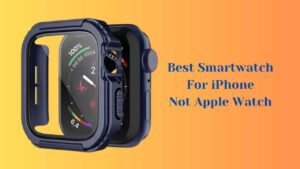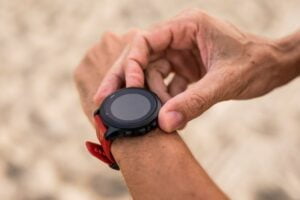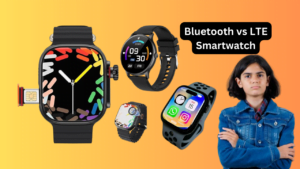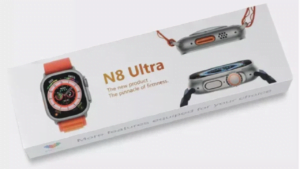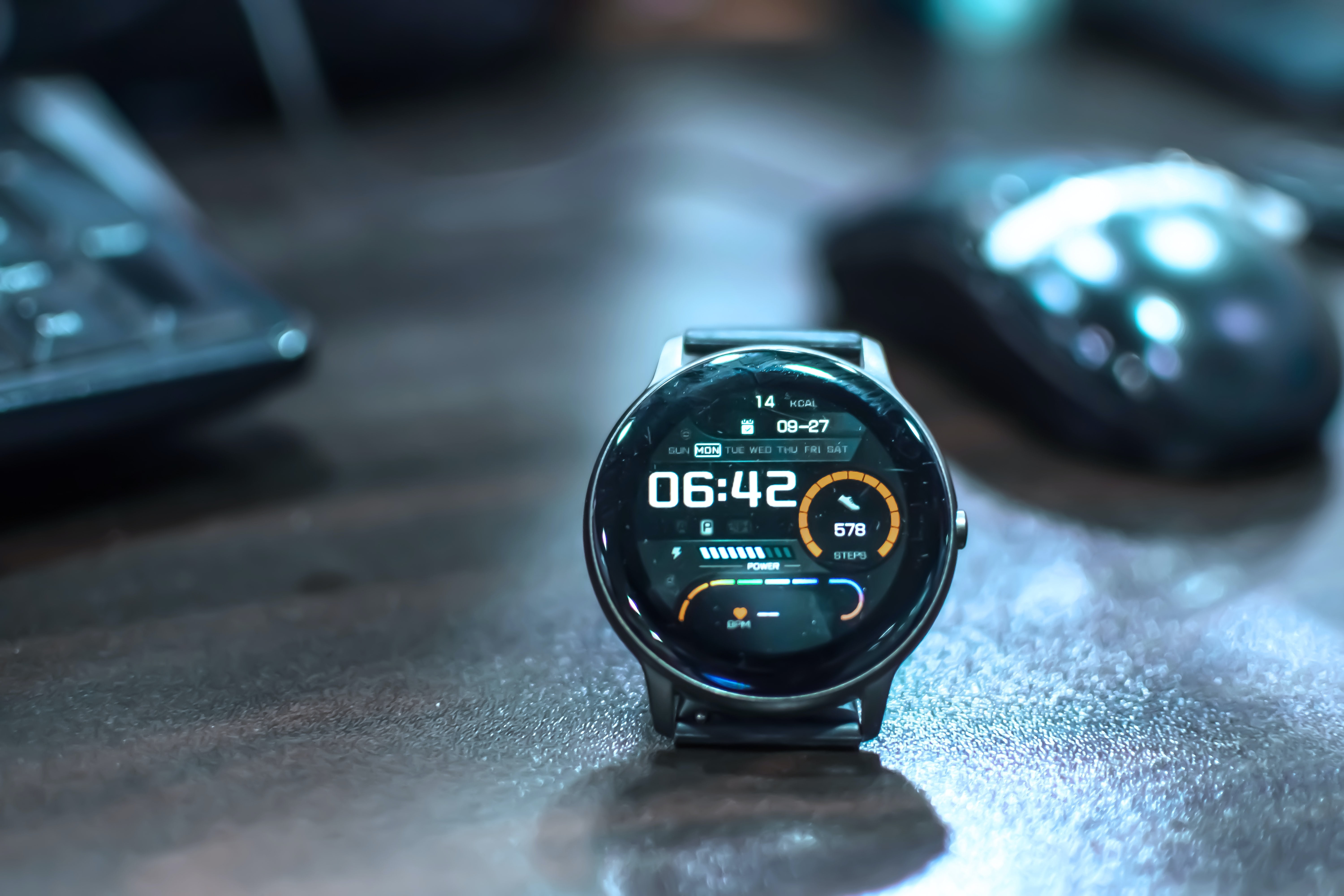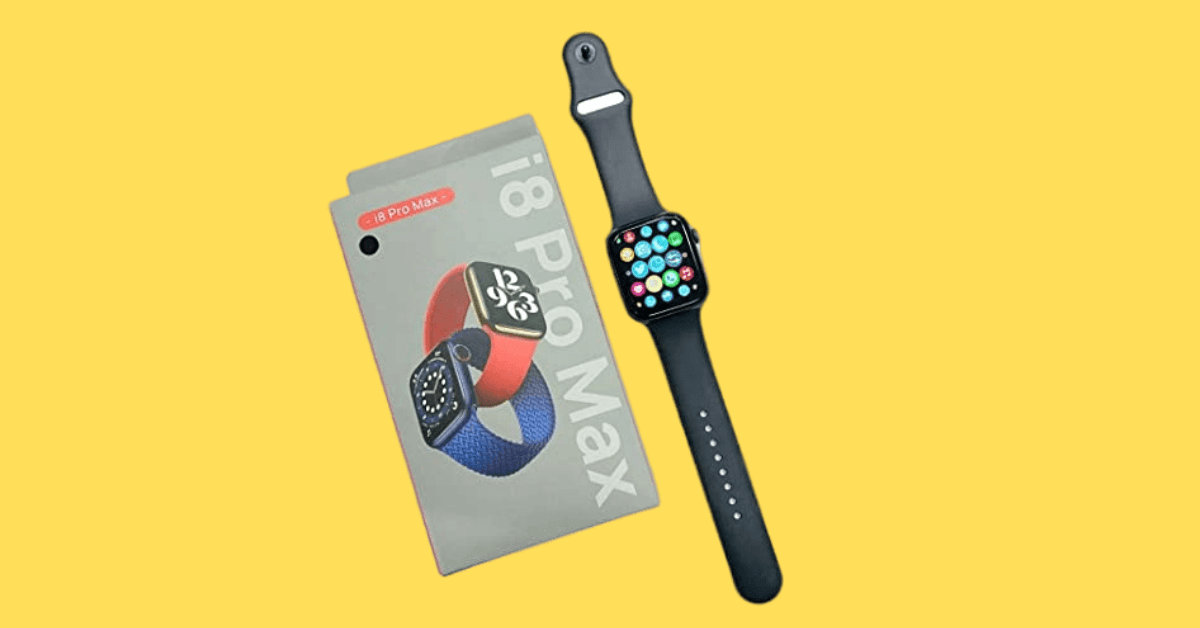Last Updated on January 24, 2024 by Kian
The realm of smartwatches has witnessed a remarkable evolution. With choices between Bluetooth and LTE connectivity, users are confronted with decisions that impact how they interact with their wearable devices. In this tech-driven era, where seamless connectivity is paramount, the debate between Bluetooth and LTE smartwatches has garnered significant attention. In this comparison, we delve into the distinctions between these two connectivity options, aiming to guide users toward a well-informed choice. While Bluetooth has long been a staple for connecting devices, LTE emerges as a game-changer, offering standalone capabilities that redefine the possibilities of smartwatch usage. Join us as we navigate through the pros and cons, connectivity aspects, tracing accuracy, app functionality, emergency assistance, battery life, design considerations, and more, to unravel the Bluetooth vs LTE smartwatch dilemma. Let’s explore why LTE could be the preferred choice, setting the stage for an in-depth exploration of these two prevalent smartwatch technologies.
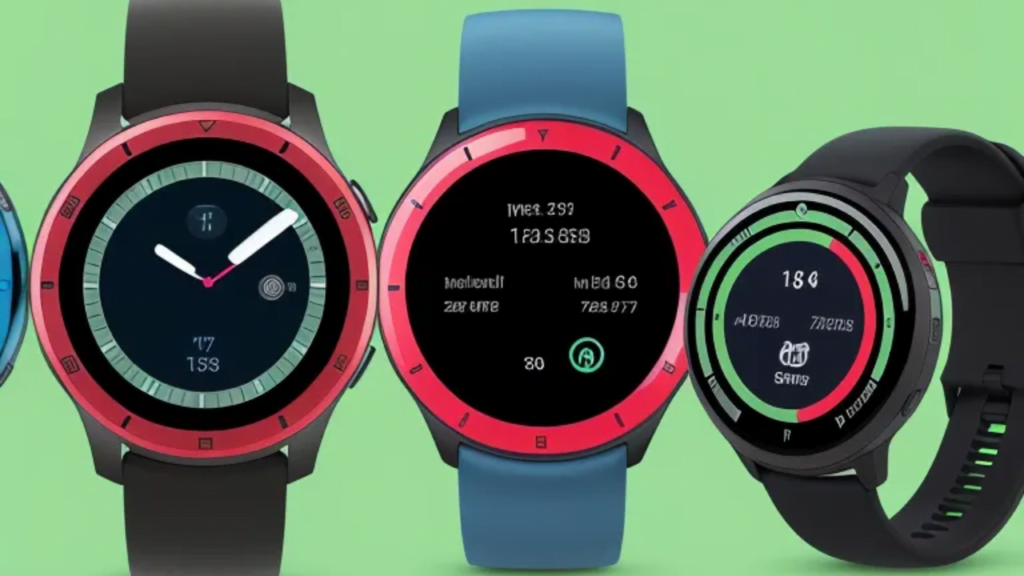
Bluetooth Smartwatches: Pros and Cons
Bluetooth smartwatches have long been a popular choice among users for their seamless connectivity with smartphones and other devices. The Galaxy Watch 4 and Galaxy Watch 4 Classic, available in Bluetooth/WiFi models, offer users the convenience of wireless connectivity without the need for a cellular plan. The pros of Bluetooth smartwatches include their affordability, energy efficiency, and compatibility with a wide range of devices. However, they come with limitations in terms of independence and functionality, relying heavily on the paired smartphone for calls, messages, and other data-related activities.
On the flip side, Bluetooth smartwatches can be perceived as limiting, as they lack standalone cellular capabilities. This can be a drawback in situations where users want to leave their smartphones behind but still stay connected. The dependence on a paired smartphone can lead to reduced functionality, especially in outdoor or travel scenarios where connectivity may be intermittent.
LTE Smartwatches: Pros and Cons
LTE smartwatches, exemplified by the LTE models of the Galaxy Watch 4 series, offer users enhanced connectivity and independence. The built-in cellular capabilities enable these smartwatches to operate as standalone devices, allowing users to make calls, send messages, and access data even when their smartphones are out of reach. This level of autonomy is particularly advantageous for users leading an active lifestyle or those who prioritize staying connected on the go.
The downside of LTE smartwatches lies in the potential higher cost, both upfront and in terms of ongoing cellular plan expenses. Additionally, the increased reliance on cellular connectivity may impact battery life, necessitating more frequent charging compared to their Bluetooth counterparts. However, the benefits of standalone functionality often outweigh these drawbacks for users seeking a more comprehensive and independent smartwatch experience.
Bluetooth vs LTE Smartwatch Connectivity
When comparing Bluetooth and LTE smartwatches, connectivity is a crucial aspect. Bluetooth smartwatches rely on the Bluetooth connection with a paired smartphone, limiting their range to the proximity of the connected device. This can be a drawback for users who want to stay connected beyond the range of their smartphones.
On the other hand, LTE smartwatches provide a more expansive range of connectivity. With built-in cellular capabilities, these smartwatches can maintain connectivity independently, offering users the flexibility to make calls and receive notifications without the need for a nearby smartphone. This becomes particularly beneficial in scenarios where users may want to leave their smartphones behind or maintain connectivity in outdoor settings.
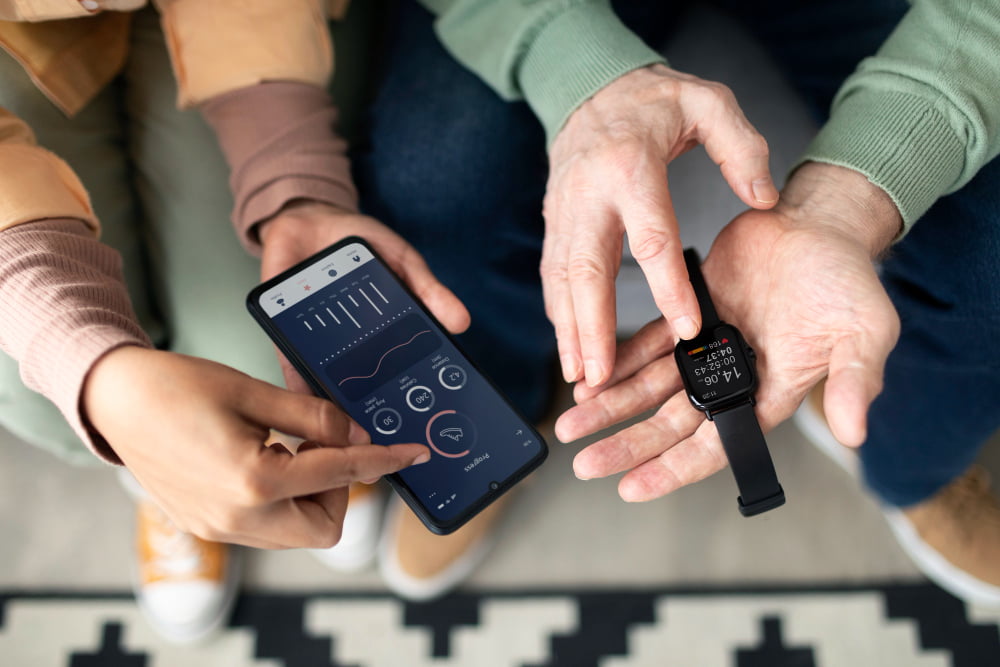
Bluetooth vs LTE Smartwatch Tracing Accuracy
Tracing accuracy is a critical factor for fitness enthusiasts and health-conscious users. Bluetooth smartwatches generally rely on the sensors and GPS of the paired smartphone for tracking activities and location. While this can be accurate in most cases, the dependence on the smartphone’s capabilities may lead to occasional discrepancies, especially in scenarios where the smartphone is not carried or has limited GPS accuracy.
LTE smartwatches, with their built-in GPS and sensors, offer more accurate tracing capabilities. The independence from a paired smartphone ensures that users can rely on the smartwatch itself for precise tracking of activities, distances, and locations. This can be a deciding factor for users who prioritize accurate fitness and health data without being tethered to their smartphones during workouts or outdoor activities.
You Might Also Like:
Bluetooth vs LTE Smartwatch App Functionality
App functionality is a key consideration for smartwatch users, influencing their overall user experience. Bluetooth smartwatches, while capable of supporting various apps, may have limitations compared to LTE models. The reliance on a paired smartphone can restrict the availability and functionality of certain apps, impacting the overall versatility of the smartwatch.
LTE smartwatches, being standalone devices, have the advantage of supporting a broader range of apps without the need for constant smartphone connectivity. Users can download and use apps directly on the smartwatch, enhancing the device’s functionality and versatility. This becomes particularly beneficial for users who want a more independent and feature-rich smartwatch experience.
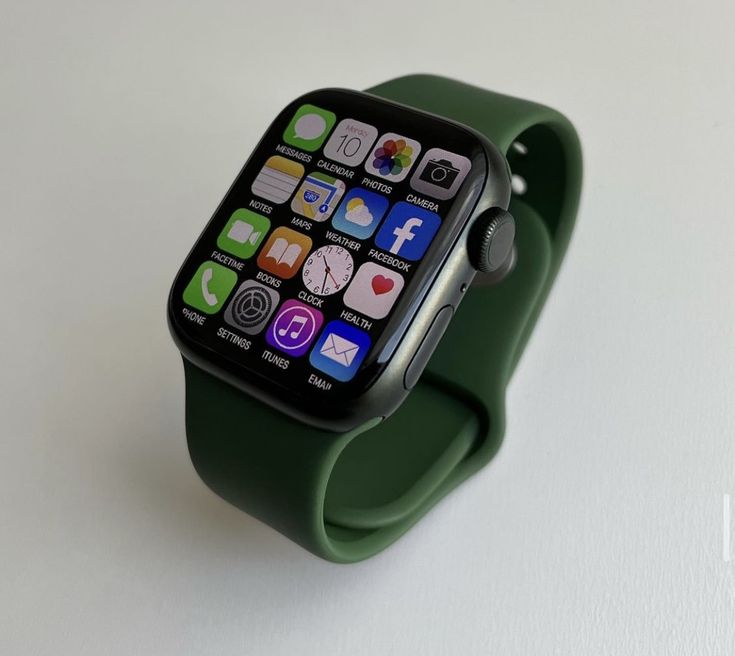
Bluetooth vs LTE Smartwatch Emergency Assistance
Emergency assistance capabilities are crucial for user safety, especially in unforeseen situations. Bluetooth smartwatches, being dependent on a connected smartphone, may face limitations in providing timely emergency assistance. The reliance on the smartphone’s network connection and the need for the user to carry the smartphone can potentially delay the initiation of emergency services.
LTE smartwatches, with their standalone cellular capabilities, excel in providing quick and direct access to emergency services. Users can make emergency calls and send distress signals directly from the smartwatch, ensuring prompt assistance in critical situations. This feature can be a deciding factor for users who prioritize safety and want a smartwatch that can independently initiate emergency services without relying on a nearby smartphone.
Bluetooth vs LTE Smartwatch Battery Life
Battery life is a significant consideration for smartwatch users, influencing the frequency of charging and overall usability. Bluetooth smartwatches, by their lower power consumption due to limited standalone functionality, often boast longer battery life compared to LTE models. This can be an attractive feature for users who prefer a smartwatch with extended usage between charges.
On the other hand, LTE smartwatches may experience shorter battery life due to the constant use of cellular connectivity. The need for standalone operation and the power requirements of cellular communication can contribute to more frequent charging. Users must weigh the convenience of standalone functionality against the potential trade-off of shorter battery life when choosing between Bluetooth and LTE smartwatches.
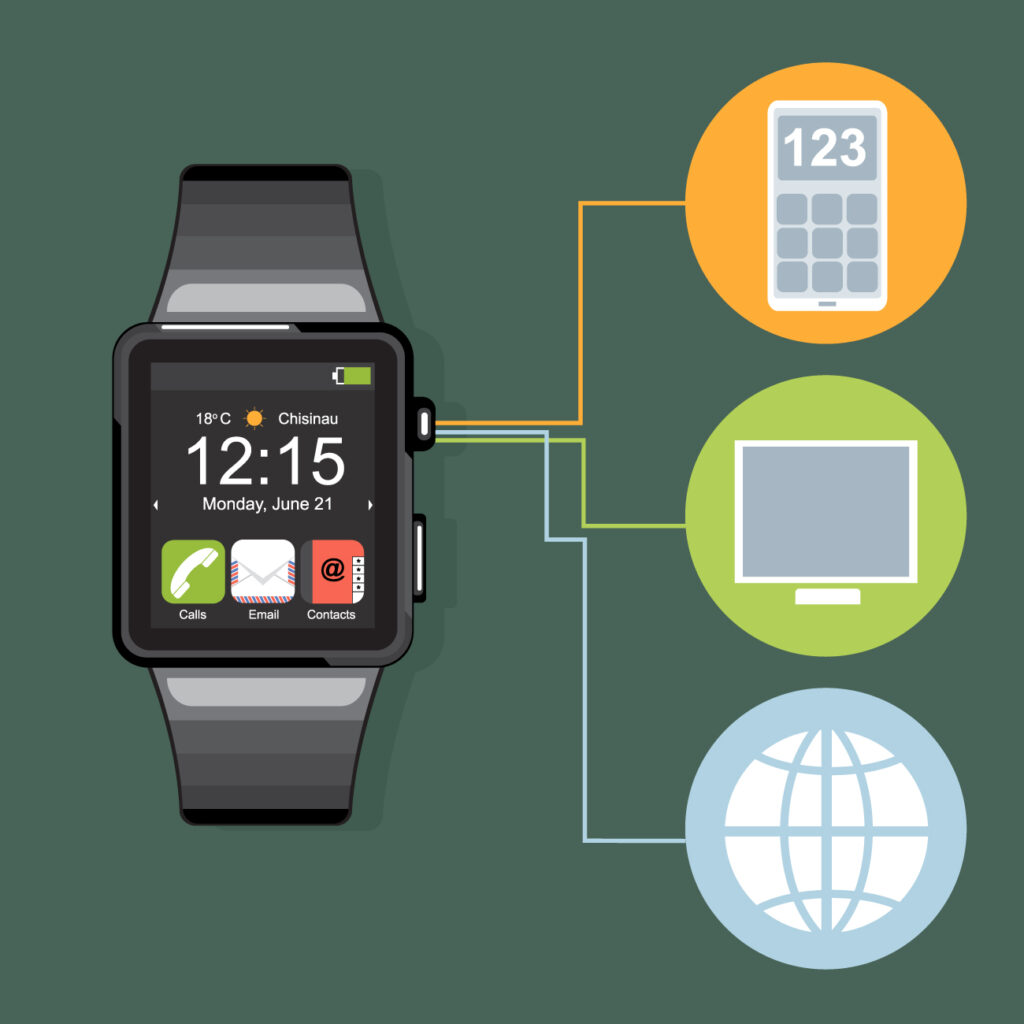
Bluetooth vs LTE Smartwatch Cost Considerations
Cost is a significant factor influencing the decision-making process when choosing between Bluetooth and LTE smartwatches. Bluetooth models are generally more affordable upfront, as they do not include the additional hardware required for standalone cellular capabilities. This makes Bluetooth smartwatches an attractive option for budget-conscious users who prioritize essential smartwatch features without the need for independent cellular connectivity.
LTE smartwatches, due to their built-in cellular capabilities, come with a higher upfront cost. Additionally, users must consider ongoing expenses related to cellular plans, contributing to the overall cost of ownership. While the benefits of standalone functionality may justify the higher cost for some users, those on a budget may find Bluetooth models to be a more economical choice.
Bluetooth vs LTE Smartwatch Customization Options
Customization options, including watch faces, bands, and overall personalization, are essential for users looking to make their smartwatch uniquely theirs. In the case of the Galaxy Watch 4 series, both Bluetooth and LTE models offer the same level of customization options. Users can choose from a variety of watch faces, and the standard watch bands can be easily replaced with compatible bands of their choice.
Whether opting for the Bluetooth or LTE model, users can personalize their smartwatch to match their style and preferences. This ensures that customization options are not a differentiating factor when choosing between the two connectivity options.
Bluetooth vs LTE Smartwatch Software Updates
Software updates are crucial for maintaining the performance, security, and functionality of smartwatches. Both Bluetooth and LTE models of the Galaxy Watch 4 series receive regular software updates from Samsung. These updates include improvements, new features, and bug fixes to enhance the overall user experience.
Users can expect a consistent software update experience regardless of whether they choose the Bluetooth or LTE model. Samsung’s commitment to providing timely updates ensures that users can enjoy the latest enhancements and improvements, keeping their smartwatches up to date with the latest technology.
Bluetooth vs LTE Smartwatch Privacy and Security
Privacy and security are paramount considerations in the era of connected devices. Bluetooth smartwatches, while generally secure when paired with a trusted smartphone, may face potential vulnerabilities in crowded or unsecured Bluetooth environments. Users must exercise caution and ensure that their Bluetooth connections are secure to prevent unauthorized access to their smartwatches.
LTE smartwatches, with their standalone cellular capabilities, benefit from a more secure and direct connection to the cellular network. This reduces the risk of unauthorized access through Bluetooth vulnerabilities, enhancing overall privacy and security. Users who prioritize a higher level of security may find LTE smartwatches to be a more reassuring choice.
Bluetooth vs LTE Smartwatch Network Speed and Data Transfer
Network speed and data transfer capabilities are crucial for seamless communication and app functionality. Bluetooth smartwatches, relying on the paired smartphone’s connection, may experience variations in network speed based on the smartphone’s capabilities and network conditions. This can lead to potential delays in data transfer and app responsiveness.
LTE smartwatches, with their independent cellular capabilities, offer more consistent and reliable network speed. The direct connection to the cellular network ensures faster data transfer, quicker app responsiveness, and an overall smoother user experience. Users who prioritize a seamless and responsive smartwatch experience may find LTE models to be a more suitable choice in terms of network speed and data transfer.
Bluetooth vs LTE Smartwatch Compatibility with Devices
Device compatibility is a key consideration, especially for users who own a variety of devices within an ecosystem. Bluetooth smartwatches generally enjoy broad compatibility with a wide range of smartphones, regardless of the brand or operating system. This ensures that users can seamlessly pair their smartwatches with their preferred smartphones, irrespective of the device’s manufacturer.
LTE smartwatches, while also compatible with a range of smartphones, may have additional compatibility requirements based on the cellular network bands supported by the device. Users must ensure that their chosen LTE smartwatch is compatible with their preferred carrier’s network to fully leverage the standalone cellular capabilities. Those with specific carrier preferences may need to check the LTE model’s compatibility before making a decision.
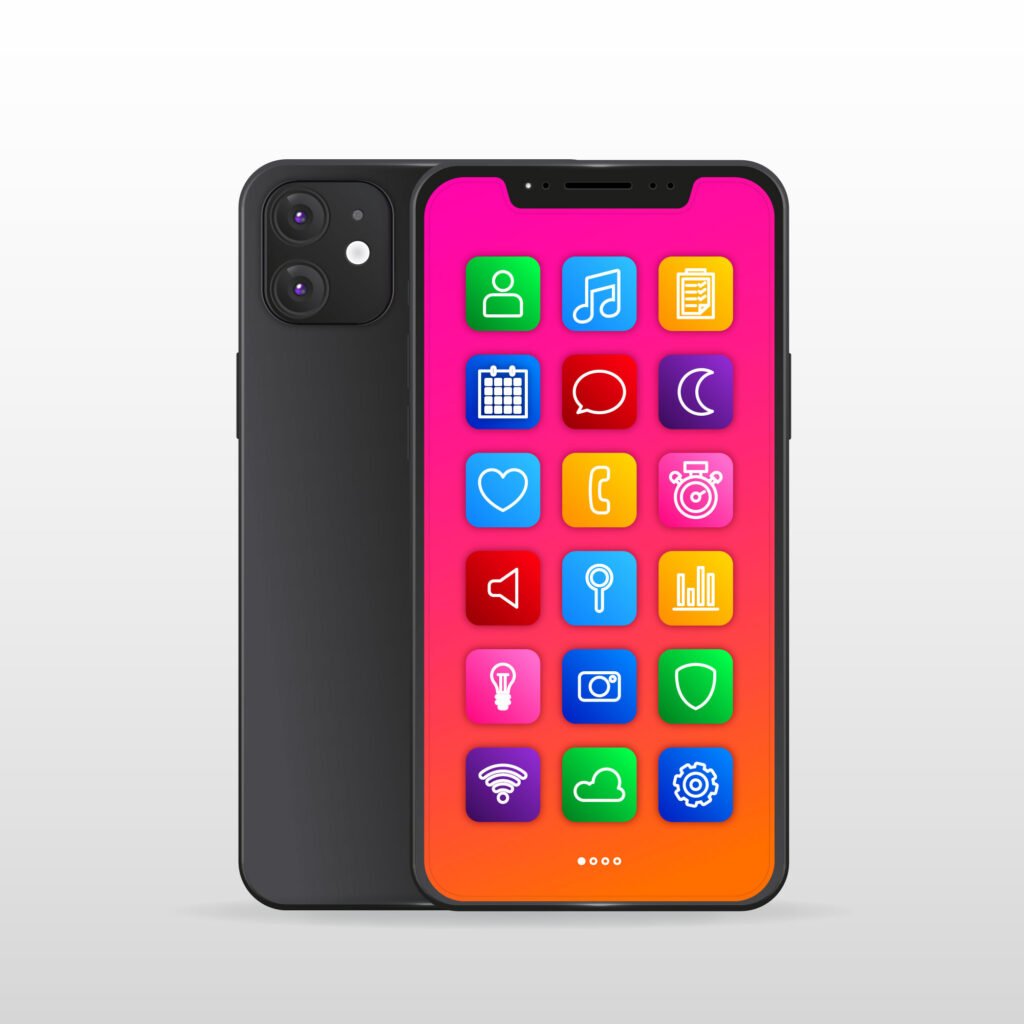
Bluetooth vs LTE Smartwatch Integration with Smart Home Devices
Smart home integration is a growing trend, with users seeking a seamless connection between their smartwatches and other smart devices. Both Bluetooth and LTE models of the Galaxy Watch 4 series offer integration with various smart home devices, allowing users to control lights, thermostats, and other compatible devices directly from their wrists.
The choice between Bluetooth and LTE does not significantly impact smart home integration, as both models support the necessary connectivity protocols. Users can enjoy a connected and convenient smart home experience, regardless of whether they opt for the Bluetooth or LTE model.
Bluetooth vs LTE Smartwatch Outdoor and Travel Performance
Outdoor and travel performance is a crucial consideration for users who lead active lifestyles or frequently find themselves in remote locations. Bluetooth smartwatches, dependent on the proximity of the paired smartphone, may face limitations in maintaining connectivity in outdoor or travel scenarios where the smartphone is not readily accessible.
LTE smartwatches shine in outdoor and travel settings, providing users with the freedom to stay connected even when they leave their smartphones behind. The standalone cellular capabilities ensure that users can make calls, send messages, and access data without relying on a nearby smartphone. This becomes a significant advantage for users who prioritize uninterrupted connectivity during outdoor activities or travel.
Bluetooth vs LTE Smartwatch User Interface and Experience
The user interface and overall user experience are paramount in determining the satisfaction and usability of a smartwatch. Both Bluetooth and LTE models of the Galaxy Watch 4 series offer a consistent and user-friendly interface, ensuring that users can navigate through features, apps, and settings effortlessly.
The choice between Bluetooth and LTE does not significantly impact the overall user interface and experience. Samsung’s intuitive interface design, coupled with the powerful hardware of the Galaxy Watch 4 series, delivers a smooth and enjoyable user experience for users of both connectivity options.
Conclusion
In conclusion of Bluetooth vs LTE Smartwatch, I would always prefer a LTE. It would cost me a little hire but the features and functionality all match. But no doubt, the Bluetooth smartwatch also be a good option if you want long-lasting battery life and affordability. The Bluetooth smartwatch is generally suitable for users who primarily rely on their smartphones for connectivity and do not require standalone capabilities. On the other hand, LTE smartwatches provide enhanced independence and connectivity, making them ideal for users who prioritize standalone functionality, especially in outdoor or travel scenarios.
Ultimately, the decision should be based on your specific requirements and the level of independence you desire in a smartwatch.
FAQ’s
Is LTE watch better than Bluetooth?
The choice between an LTE and Bluetooth smartwatch depends on individual preferences and needs. LTE watches offer standalone functionality, allowing users to make calls and access data independently, while Bluetooth watches rely on a paired smartphone. Whether one is better than the other depends on the user’s priority for standalone capabilities or the desire for a more affordable and energy-efficient option.
Does an LTE watch need a data plan?
Yes, an LTE watch typically requires a data plan to fully utilize its standalone capabilities. The built-in cellular connectivity allows the watch to make calls, send messages, and access data independently. Users need to subscribe to a data plan from their carrier to enable these features. It’s important to consider the additional cost of a data plan when opting for an LTE watch.
What are the advantages of LTE over Bluetooth?
LTE offers several advantages over Bluetooth in smartwatches. The key advantage is standalone functionality, allowing LTE watches to operate independently without relying on a paired smartphone. This independence is particularly valuable for users who want to stay connected on the go, even without their phones. LTE also provides more consistent network speed and data transfer, enhancing the overall user experience.
What does LTE mean on a smartwatch?
LTE stands for Long-Term Evolution and, in the context of a smartwatch, refers to the cellular connectivity technology that enables the watch to connect to the internet, make calls, and send messages independently of a paired smartphone. LTE allows the smartwatch to operate on a cellular network, similar to how a smartphone does.
Is LTE smartwatch worth it?
Whether an LTE smartwatch is worth it depends on individual preferences and lifestyle. For users who prioritize independence and want a smartwatch that can function without a paired smartphone, an LTE model is worth considering. However, it’s essential to weigh the higher upfront cost, ongoing data plan expenses, and potential impact on battery life against the benefits of standalone functionality.
Does LTE watch use more battery?
Yes, LTE watches may use more battery compared to Bluetooth models. The constant use of cellular connectivity for calls, messages, and data can contribute to higher power consumption. Users should be prepared for potentially shorter battery life with an LTE watch and plan for more frequent charging.
Do LTE watches take SIM cards?
Yes, LTE watches typically use a SIM card to connect to a cellular network. The SIM card enables the watch to access the cellular network, make calls, and use data independently. Users need to insert a compatible SIM card, often provided by their carrier, into the watch to activate its cellular capabilities.
Does LTE watch need a SIM card?
Yes, an LTE watch needs a SIM card to access cellular connectivity. The SIM card is essential for the watch to connect to the cellular network, enabling standalone functionality. Users should ensure that the watch is compatible with the type of SIM card required by their chosen carrier.
Does LTE watch work if the phone is off?
Yes, an LTE watch can work independently even if the paired smartphone is turned off or not in proximity. The standalone capabilities of an LTE watch allow users to make calls, send messages, and access data directly through the watch, regardless of the status of the paired smartphone.
What is the disadvantage of LTE?
One disadvantage of LTE is the potential impact on battery life. The constant use of cellular connectivity can lead to increased power consumption, resulting in shorter battery life compared to devices that rely solely on Bluetooth or WiFi. Additionally, LTE plans may involve additional costs, adding to the overall expense of owning and using an LTE-enabled device.
Is LTE the same as 5G?
No, LTE (Long-Term Evolution) and 5G (Fifth Generation) are different cellular technologies. LTE is an advanced form of 4G, providing high-speed data connectivity on mobile networks. 5G, on the other hand, represents the next generation of cellular technology, offering even faster data speeds, lower latency, and increased capacity compared to LTE.
What is the disadvantage of Bluetooth?
One disadvantage of Bluetooth is its limited range. Bluetooth connections have a relatively short range, typically around 30 feet (10 meters), which means that the paired devices need to be in close proximity for a stable connection. Interference from other devices in crowded environments can also impact Bluetooth connectivity.
What is the difference between LTE and Bluetooth?
The main difference between LTE and Bluetooth in smartwatches lies in connectivity. LTE enables standalone functionality, allowing the smartwatch to operate independently with its own cellular connection. Bluetooth, on the other hand, relies on a paired smartphone for connectivity, limiting the smartwatch’s range and independence. LTE provides more consistent network speed, but it may come with higher costs and potential impacts on battery life compared to Bluetooth.
Can LTE watch make calls?
Yes, an LTE watch can make calls independently without relying on a paired smartphone. The built-in cellular connectivity allows users to make calls directly from the smartwatch, providing a convenient way to stay connected on the go.
Can I leave my phone at home and use my smartwatch?
Yes, users can leave their smartphones at home and still use an LTE smartwatch. The standalone capabilities of an LTE watch enable users to make calls, send messages, and access data without the need for a paired smartphone. This is particularly useful for users who want to stay connected while engaging in outdoor activities or traveling without their phones.
Can I use a smartwatch without Bluetooth?
Yes, smartwatches, including LTE models, can be used without Bluetooth. While Bluetooth is a common connectivity option, LTE smartwatches operate independently of Bluetooth and can function without being paired with a smartphone. Users can choose to use the smartwatch with its built-in cellular capabilities, especially in LTE models.
Do you pay for LTE?
Yes, users typically need to pay for an LTE data plan to fully utilize the cellular capabilities of an LTE-enabled device, including smartwatches. The data plan covers the cost of data usage, calls, and messages made through the cellular network. Users should check with their carrier for available LTE data plans and associated costs.
What is the difference between LTE and WIFI watch?
The main difference between an LTE and WiFi watch lies in connectivity. An LTE watch has built-in cellular capabilities, allowing it to connect to the cellular network independently. In contrast, a WiFi watch relies on a WiFi connection for internet access and does not have standalone cellular capabilities. LTE watches provide more independence, especially when away from WiFi networks.
Does LTE reduce battery life?
Yes, the use of LTE connectivity can contribute to a reduction in battery life compared to devices that rely solely on Bluetooth or WiFi. The constant use of cellular connectivity for calls, messages, and data transmission can lead to increased power consumption, requiring more frequent charging of the device.
What are the advantages of LTE watches?
The advantages of LTE watches include standalone functionality, allowing users to make calls, send messages, and access data independently without relying on a paired smartphone. LTE provides more consistent network speed and data transfer, enhancing the overall user experience, especially in scenarios where users want to stay connected without their phones.
Does LTE watch use the same phone number?
Yes, in most cases, an LTE watch can use the same phone number as the paired smartphone. The cellular connectivity in the LTE watch allows it to share the same phone number as the primary device, ensuring that calls and messages directed to the phone number can also be received on the watch.
Does LTE smartwatch work in India?
Yes, LTE smartwatches can work in India, provided they are compatible with the cellular network bands used by Indian carriers. Users should check the specifications of the LTE smartwatch and ensure that it supports the relevant bands used in India for seamless connectivity.
Does LTE mean 4G?
Yes, LTE stands for Long-Term Evolution and is often associated with 4G (Fourth Generation) technology. LTE is a standard for wireless broadband communication and is considered an advanced form of 4G, providing high-speed data connectivity on mobile networks.
Can I use my smartwatch without a SIM card?
While some smartwatches can be used without a SIM card, an LTE smartwatch typically requires a SIM card for its standalone cellular capabilities. Users should check the specifications and requirements of their specific smartwatch model to determine if a SIM card is necessary for full functionality.
Can LTE watch use Wi-Fi?
Yes, LTE watches can use WiFi for internet access, just like non-LTE models. While LTE watches have built-in cellular connectivity, they can still connect to WiFi networks for faster data speeds, especially in areas with available WiFi. Users can choose between LTE and WiFi connectivity based on their preferences and the available network options.
Do smartwatches need Wi-Fi?
While not strictly necessary, having WiFi connectivity enhances the functionality of smartwatches. WiFi enables faster data transfer, app updates, and smoother performance for certain features. Smartwatches can still function without WiFi, especially when paired with smartphones for connectivity, but having access to WiFi networks can provide additional benefits.
Can we call from a smartwatch without a phone?
Yes, certain smartwatches, especially LTE models, allow users to make calls directly from the watch without the need for a paired smartphone. The built-in cellular capabilities enable standalone calling functionality, providing users with the convenience of making and receiving calls directly on the smartwatch.
Is 5G faster than LTE?
Yes, 5G (Fifth Generation) technology is generally faster than LTE (Long-Term Evolution). 5G offers significantly higher data speeds, lower latency, and increased capacity compared to LTE. This advancement in technology aims to provide users with faster and more reliable connectivity for various applications.
Does LTE waste data?
LTE itself does not waste data, but how data is used on an LTE-enabled device can impact data consumption. The use of data-intensive applications, streaming, and frequent downloads can lead to higher data usage. Users should be mindful of their data usage habits to avoid exceeding data plan limits.
Which is stronger, LTE, or 4G?
LTE (Long-Term Evolution) is often considered an advanced form of 4G (Fourth Generation) technology. In practical terms, the terms “LTE” and “4G” are sometimes used interchangeably. LTE is designed to provide faster data speeds and improved performance compared to earlier iterations of 4G technology.
Is LTE safer than 5G?
The safety of LTE and 5G networks is primarily related to radio frequency (RF) exposure. Both LTE and 5G networks adhere to established safety guidelines to limit RF exposure below recognized safety levels. The safety of these technologies is continually monitored and regulated by health authorities. As of now, there is no conclusive evidence to suggest that one is inherently safer than the other.
Does LTE use less battery than 5G?
In general, LTE technology may use less battery compared to 5G, primarily because 5G networks often require more power for their higher data speeds and lower latency. However, the specific impact on battery life depends on various factors, including the device, network conditions, and how efficiently the device manages the use of these technologies.
Is Bluetooth lower quality?
The quality of Bluetooth depends on various factors, including the Bluetooth version, device compatibility, and usage scenario. Bluetooth technology has evolved over the years, with newer versions offering improvements in data transfer speed, range, and energy efficiency. While Bluetooth is generally suitable for tasks like audio streaming and device connectivity, users may experience occasional quality issues, such as signal interference or limited range, particularly in crowded or obstructed environments.
Is Bluetooth weaker than Wi-Fi?
Bluetooth and Wi-Fi are distinct wireless communication technologies designed for different purposes. While both operate in the 2.4 GHz frequency band (and 5 GHz for Wi-Fi), they have different functionalities and characteristics. Wi-Fi typically offers higher data transfer speeds and a longer range compared to Bluetooth, making it more suitable for tasks like internet browsing and file transfers. However, Bluetooth excels in short-range, low-power connectivity, making it ideal for tasks like connecting peripherals and streaming audio.
What are two advantages of Bluetooth?
Two advantages of Bluetooth include:
- Wireless Connectivity: Bluetooth provides a convenient and wireless way to connect devices, eliminating the need for physical cables. This makes it easy to pair and use devices like headphones, speakers, and smartwatches without the hassle of wires.
- Low Power Consumption: Bluetooth technology is designed for low-power consumption, making it suitable for battery-operated devices like wireless earbuds and smartwatches. This efficiency allows for longer battery life in devices that use Bluetooth connectivity.
Why LTE instead of 5G?
The choice between LTE (Long-Term Evolution) and 5G depends on various factors, including network availability, device compatibility, and user requirements. LTE is a mature and widespread technology, offering reliable connectivity for voice and data. Users may choose LTE if they prioritize a stable and established network, while 5G is selected for its higher data speeds, lower latency, and increased network capacity, catering to the demand for more advanced applications and services.
Why use LTE?
LTE is used for several reasons:
- Standalone Connectivity: LTE provides standalone cellular connectivity, allowing devices like smartwatches to operate independently without relying on a paired smartphone.
- Data Access on the Go: LTE enables users to access data, make calls, and send messages even when away from WiFi networks. This is particularly beneficial in outdoor or travel scenarios.
- Consistent Network Speed: LTE offers more consistent and reliable network speed compared to technologies like 3G, ensuring a smoother user experience for tasks like streaming and web browsing.
Does Samsung watch LTE work in India?
Yes, Samsung LTE watches should work in India, but compatibility depends on the specific model and whether it supports the cellular bands used by Indian carriers. Users should check the device specifications and ensure compatibility with the local cellular network bands for seamless connectivity.
Can I answer calls on a smartwatch?
Yes, many smartwatches, especially those with LTE connectivity, allow users to answer calls directly on the smartwatch. This is a convenient feature that enhances the overall functionality of the device, providing a hands-free calling experience.
Can I leave my phone at home and use my Galaxy Watch 5?
Yes, if you have a Galaxy Watch with LTE capabilities, you can leave your phone at home and still use the smartwatch for tasks like making calls, sending messages, and accessing data independently. The LTE functionality allows the Galaxy Watch to operate as a standalone device.
How far can my smartwatch be from my phone?
The range of connectivity between a smartwatch and a paired smartphone depends on the wireless technology used, such as Bluetooth. In general, Bluetooth has a range of up to approximately 30 feet (10 meters). Beyond this range, the connection may become unstable. It’s important to keep the smartwatch within the specified range for reliable connectivity.
Can we turn off a smartwatch?
Yes, smartwatches typically have a power-off or standby mode that allows users to turn off the device when not in use. The specific method for turning off a smartwatch may vary depending on the make and model, so users should refer to the device’s user manual for instructions.
Can we keep a smartwatch while sleeping?
Yes, many smartwatches are designed to be worn during sleep for sleep tracking and monitoring purposes. However, users should ensure that the smartwatch is comfortable and does not interfere with their sleep. Some smartwatches also have sleep tracking features that provide insights into sleep duration and quality.
Do I need Bluetooth with an LTE watch?
No, an LTE watch does not necessarily need Bluetooth for its core functionality. LTE watches have standalone cellular capabilities, allowing them to operate independently without relying on Bluetooth connectivity. However, Bluetooth may still be used for tasks like connecting to peripherals, such as headphones or fitness sensors, if desired.
Can an LTE watch also use Bluetooth?
Yes, many LTE watches also support Bluetooth connectivity. This allows users to connect their LTE-enabled smartwatches to Bluetooth devices, such as headphones or speakers, for audio streaming. Users can choose between LTE and Bluetooth connectivity based on their preferences and the specific use case.
What does LTE mean?
LTE stands for Long-Term Evolution. In the context of wireless communication, LTE refers to a standard for high-speed wireless broadband communication. LTE is commonly associated with 4G (Fourth Generation) technology and provides faster data speeds and improved network performance compared to earlier generations of mobile communication technologies.
Is an LTE smartwatch worth it?
Whether an LTE smartwatch is worth it depends on individual preferences and requirements. LTE smartwatches offer standalone functionality, allowing users to make calls and access data independently. This can be particularly valuable for users who want to stay connected without their smartphones. However, potential drawbacks include higher upfront costs, ongoing data plan expenses, and potential impacts on battery life.
What is LTE in a smartwatch?
In a smartwatch, LTE (Long-Term Evolution) refers to the capability to connect to cellular networks independently, without relying on a paired smartphone. An LTE-enabled smartwatch can make calls, send messages, and access data using its built-in cellular connectivity. This provides users with greater independence and flexibility, especially in scenarios where a smartphone may not be readily available.
Does Bluetooth or LTE use more battery?
In general, LTE connectivity may use more battery compared to Bluetooth, primarily due to the higher power requirements for cellular communication. Constant use of LTE for tasks like making calls and accessing data can contribute to increased power consumption. Users should be mindful of the potential impact on battery life when using LTE features on their smartwatches.
Are 4G and LTE the same?
No, 4G (Fourth Generation) and LTE (Long-Term Evolution) are related but not exactly the same. LTE is a standard within the broader category of 4G technologies. When people refer to their device having “4G LTE,” they are usually indicating that it supports the LTE standard for high-speed wireless communication, which is considered a part of the 4G family of technologies.
Do I need Bluetooth with an LTE watch?
No, an LTE watch does not necessarily need Bluetooth for its core functionality. LTE watches have standalone cellular capabilities, allowing them to operate independently without relying on Bluetooth connectivity. However, Bluetooth may still be used for tasks like connecting to peripherals, such as headphones or fitness sensors, if desired.
Can an LTE watch be used as a Bluetooth watch?
Yes, many LTE watches also support Bluetooth connectivity. This allows users to switch between LTE and Bluetooth modes, enabling them to use the watch with Bluetooth accessories and devices when a cellular connection is not necessary.
Can an LTE watch also use Bluetooth?
Yes, an LTE watch can use Bluetooth for various purposes, such as connecting to headphones, speakers, or other Bluetooth-enabled devices. This dual-mode functionality allows users to leverage both LTE and Bluetooth connectivity based on their specific needs.
Can an LTE watch use Bluetooth?
Yes, LTE watches often come with Bluetooth capabilities, allowing them to connect to Bluetooth-enabled devices like headphones, speakers, or smartphones for tasks such as audio streaming and file transfers.
Does an LTE watch need a SIM card?
Yes, an LTE watch typically requires a SIM card to access cellular connectivity. The SIM card is necessary for the watch to connect to the cellular network, enabling standalone functionality for tasks like making calls, sending messages, and accessing data independently.
Can I use an LTE watch without a phone?
Yes, an LTE watch can be used without a paired smartphone. The standalone cellular capabilities of an LTE watch allow users to make calls, send messages, and access data independently, providing a level of functionality even when the phone is not present.
Can I use an LTE smartwatch without a phone?
Yes, an LTE smartwatch can be used without a paired smartphone. The standalone cellular capabilities of an LTE smartwatch allow users to make calls, send messages, and access data independently, providing a level of autonomy from the phone.
What is the difference between LTE and Bluetooth?
LTE and Bluetooth are different wireless communication technologies. LTE (Long-Term Evolution) is a cellular network technology that provides high-speed wireless broadband communication. It enables standalone connectivity, allowing devices to operate independently.
Bluetooth, on the other hand, is a short-range wireless technology used for connecting devices over shorter distances. It is commonly used for tasks like connecting headphones, speakers, and other peripherals to smartphones and smartwatches.
Can an LTE watch make calls?
Yes, an LTE watch can make calls independently without relying on a paired smartphone. The built-in cellular connectivity allows users to make and receive calls directly on the watch.
Does LTE mean 4G?
Yes, LTE (Long-Term Evolution) is often associated with 4G (Fourth Generation) technology. LTE is a standard within the 4G family of technologies and represents a significant advancement in wireless communication, offering higher data speeds and improved performance compared to earlier generations.
What is the difference between LTE and Wi-Fi in a watch?
LTE in a watch refers to the watch’s capability to connect to cellular networks independently, allowing it to make calls and access data without relying on Wi-Fi or a paired smartphone. Wi-Fi in a watch allows for internet connectivity when the watch is within range of a Wi-Fi network but does not provide standalone cellular capabilities.
Does a Samsung watch LTE work in India?
Yes, a Samsung LTE watch should work in India, provided it supports the cellular bands used by Indian carriers. Users should check the specifications of the Samsung watch model and ensure compatibility with the relevant cellular network bands for seamless connectivity.
Can you stream music on an LTE watch?
Yes, users can stream music on an LTE watch with built-in music streaming apps or by connecting to music services over the cellular network. This is a convenient feature for users who want to enjoy music on the go without the need for a paired smartphone.
What does LTE mean?
LTE stands for Long-Term Evolution. In the context of wireless communication, LTE is a standard for high-speed wireless broadband communication. It represents an advanced form of 4G (Fourth Generation) technology, providing faster data speeds and improved network performance.
What is LTE on a Samsung watch?
LTE on a Samsung watch refers to the watch’s capability to connect to cellular networks independently. This allows the watch to make calls, send messages, and access data without relying on a paired smartphone or Wi-Fi.
Where is LTE used?
LTE is used globally and is a widely adopted cellular network technology. It is implemented in various countries to provide high-speed wireless communication for mobile devices, including smartphones, tablets, smartwatches, and other connected devices.
What are the advantages of LTE watches?
Advantages of LTE watches include:
- Standalone Connectivity: LTE watches can operate independently, allowing users to make calls and access data without relying on a paired smartphone.
- On-the-Go Functionality: LTE watches provide users with connectivity on the go, enabling tasks like making calls and accessing data even when away from Wi-Fi networks.
- Consistent Network Speed: LTE offers more consistent and reliable network speed compared to technologies like 3G, ensuring a smoother user experience.
Does an LTE smartwatch work in India?
Yes, an LTE smartwatch should work in India, provided it supports the cellular bands used by Indian carriers. Users should check the specifications of the smartwatch model and ensure compatibility with the relevant cellular network bands for seamless connectivity.
Can I leave my phone at home and use my smartwatch?
Yes, depending on the capabilities of the smartwatch. LTE-enabled smartwatches, in particular, allow users to make calls, send messages, and access data independently, reducing the reliance on a paired smartphone. Users can leave their phones at home and still stay connected through the smartwatch.
How does LTE work?
LTE works by using radio waves to transmit data between a device (such as a smartphone or smartwatch) and a cellular tower. It employs advanced wireless communication technologies to provide high-speed data connectivity, allowing users to make calls, send messages, and access the internet over a cellular network.
Can I leave my phone at home and use my Galaxy watch?
Yes, users with a Galaxy watch that has LTE capabilities can leave their phones at home and still use the watch independently. The Galaxy watch, with LTE functionality, allows users to make calls, send messages, and access data without the need for a paired smartphone.
Do smartwatches work without Wi-Fi?
Yes, smartwatches can work without Wi-Fi, especially if they have standalone connectivity options such as LTE. While Wi-Fi is useful for internet access and certain features, smartwatches can operate independently through other connectivity options, like cellular networks or Bluetooth.
Can I use a smartwatch without Bluetooth?
Yes, smartwatches can be used without Bluetooth, especially if they have alternative connectivity options such as Wi-Fi or cellular (LTE). While Bluetooth is commonly used for connecting to peripherals, smartwatches can function independently of Bluetooth for core features.
Can I use a Galaxy 5 watch without a phone?
Yes, if you have a Galaxy 5 watch with LTE capabilities, you can use it without a paired smartphone. The LTE functionality allows the watch to operate independently, enabling tasks like making calls and accessing data without the need for a phone.
Is 5G faster than LTE?
Yes, 5G (Fifth Generation) technology is generally faster than LTE (Long-Term Evolution). 5G offers significantly higher data speeds, lower latency, and increased capacity compared to LTE, making it a more advanced and faster cellular network technology.
Is it better to use LTE or 5G?
The choice between LTE and 5G depends on various factors, including network availability, device compatibility, and user requirements. 5G offers significantly higher data speeds, lower latency, and increased capacity compared to LTE, making it ideal for applications that demand advanced connectivity. However, LTE is a mature and widespread technology, providing reliable and established network coverage. Users should consider their specific needs and the availability of each network technology in their location.
Which is better, 4G or LTE?
In practice, 4G and LTE are often used interchangeably. LTE, or Long-Term Evolution, is a standard within the broader category of 4G technologies. When people refer to their devices as having “4G LTE,” they are typically indicating support for the LTE standard within the 4G family. In this context, there is no significant difference between 4G and LTE.
Can you call on a smartwatch without a phone?
Yes, many smartwatches, especially those with LTE capabilities, allow users to make calls directly from the smartwatch without the need for a paired smartphone. The built-in cellular connectivity enables standalone calling functionality.
Can I answer calls on a smartwatch?
Yes, users can answer calls directly on a smartwatch with call functionality. This feature is particularly common in smartwatches with LTE capabilities, allowing users to receive calls on the watch without needing to reach for their paired smartphone.
Is LTE plus 5G?
LTE and 5G are distinct network technologies. LTE (Long-Term Evolution) is often associated with 4G (Fourth Generation) technology, while 5G (Fifth Generation) represents the next generation of cellular networks. “LTE plus 5G” could refer to a scenario where a device supports both LTE and 5G connectivity, providing users with flexibility and compatibility across different network technologies.
Does LTE use more data?
The amount of data used by LTE depends on the specific tasks and applications being used. Generally, LTE itself does not inherently use more data than other network technologies. Data usage is influenced by factors such as the type of content being accessed, apps running in the background, and user behavior. Streaming high-definition videos or downloading large files over LTE can result in higher data consumption.
Does LTE use data or Wi-Fi?
LTE uses cellular data provided by a mobile carrier’s network. It operates independently of Wi-Fi and does not rely on a Wi-Fi connection for internet access. Users can access data over LTE when outside Wi-Fi coverage areas, providing them with internet connectivity on the go.
Is the Samsung Watch 4 LTE worth it?
Whether the Samsung Watch 4 LTE is worth it depends on individual preferences and requirements. The LTE model offers standalone connectivity, allowing users to make calls and access data independently. Users who value the convenience of using the smartwatch without relying on a paired smartphone may find the LTE version worth the investment.
Can smartwatches play music without a phone?
Yes, smartwatches with built-in storage or music streaming apps can play music without a paired smartphone. Users can store music directly on the smartwatch or stream it over a cellular network, allowing them to enjoy music independently.
Can I listen to music on my Samsung watch without my phone?
Yes, users can listen to music on a Samsung watch without their phones, especially if the watch has standalone music playback capabilities or supports music streaming over LTE.
How long does LTE data last?
The duration of LTE data depends on the user’s data plan and how it is utilized. LTE data is typically measured in gigabytes (GB) and is allocated based on the user’s monthly plan. The data lasts for the billing cycle, and any unused data may not roll over to the next cycle, depending on the carrier’s policies.
How do I change my LTE to 5G?
To use 5G on a device, ensure the following:
- Check Device Compatibility: Ensure that your device supports 5G connectivity. Not all devices are 5G-compatible.
- Subscribe to a 5G Plan: Contact your mobile carrier and subscribe to a 5G data plan.
- Enable 5G in Settings: On your device, go to settings and select the network or connectivity options. Enable 5G if it’s available.
Note: The steps can vary depending on the specific device and carrier.
How do I change my LTE to 4G?
To change your device from LTE to 4G, follow these general steps:
- Go to Settings: Navigate to the settings menu on your device.
- Select Network or Connectivity: Look for options related to network, mobile data, or connectivity.
- Choose Preferred Network Type: Within network settings, select the preferred network type and choose “4G” if available.
Note: The steps may vary based on the device and operating system.
Who invented LTE?
LTE, or Long-Term Evolution, is a standard for wireless broadband communication, and its development involved contributions from various telecommunications companies and standards organizations. Key contributors include the 3rd Generation Partnership Project (3GPP), a collaboration of telecommunications standards organizations, and companies such as Ericsson, Nokia, and Qualcomm.
Does Samsung use LTE?
Yes, many Samsung devices, including smartphones and smartwatches, support LTE connectivity. Samsung offers a range of devices with LTE capabilities, allowing users to access cellular networks for calls, messages, and data connectivity.
What speed is LTE?
The speed of LTE (Long-Term Evolution) can vary, but it generally offers data speeds that are significantly faster than 3G (Third Generation) technology. LTE can provide download speeds ranging from several megabits per second (Mbps) to over 100 Mbps, depending on factors such as network deployment, spectrum, and device capabilities.
What is an LTE smartwatch?
An LTE smartwatch is a wearable device equipped with Long-Term Evolution (LTE) connectivity. This allows the smartwatch to connect to cellular networks independently, enabling features such as making calls, sending messages, and accessing data without relying on a paired smartphone.
Does Android use LTE?
Yes, Android devices, including smartphones and tablets, commonly support LTE connectivity. Android is an operating system used by a wide range of device manufacturers, and many Android devices come with LTE capabilities for cellular communication.
Do all phones use LTE?
Not all phones use LTE, especially older models that may rely on earlier cellular network technologies like 3G or 2G. However, most modern smartphones support LTE connectivity, and many also support newer technologies like 5G for faster data speeds.
Can you use an LTE watch without LTE?
Yes, an LTE watch can still be used without an active LTE connection. In scenarios where LTE connectivity is unavailable or not needed, the watch can function in a manner similar to a non-LTE version. However, certain features that rely on cellular connectivity, such as making calls without a paired smartphone, would be limited.
Which Samsung Watch 6 has LTE?
As of my last knowledge update in January 2022, the latest Samsung Galaxy Watch series available was the Galaxy Watch 4. For information on whether a Samsung Watch 6 has LTE capabilities, I recommend checking the latest product releases and specifications from Samsung or authorized retailers.
Does the Samsung Watch 5 LTE have Bluetooth?
Yes, the Samsung Galaxy Watch Active 2, also known as the Samsung Watch 5, comes with Bluetooth connectivity in addition to LTE capabilities. This allows users to connect the smartwatch to other Bluetooth-enabled devices, such as headphones or speakers, for audio streaming and other functions.


 Price: $ 18.99
Price: $ 18.99
![TOZO 2024 New Upgraded Smart Watch for Men Women for iPhone & Android, 1.83" Fitness Tracker Bluetooth Call [Answer/Make], IP68 Waterproof with Heart Rate/SpO2/Sleep Monitor, 100+ Sport Modes](https://m.media-amazon.com/images/I/51xbWOcZ5ML._SL160_.jpg)








